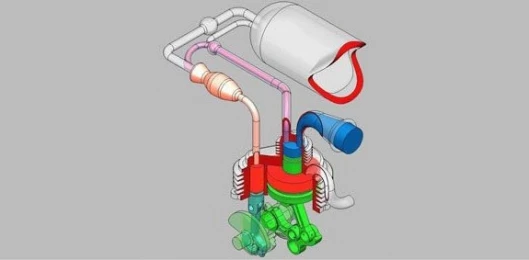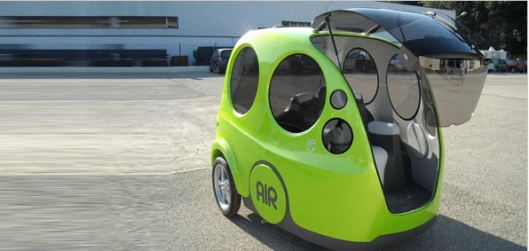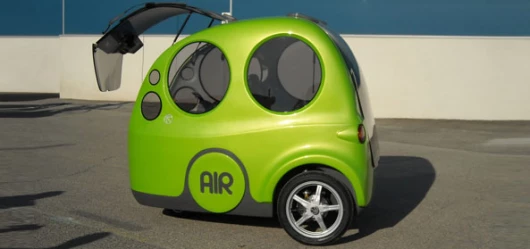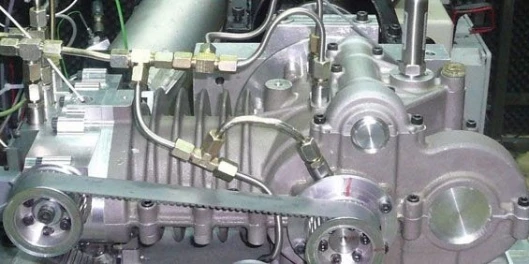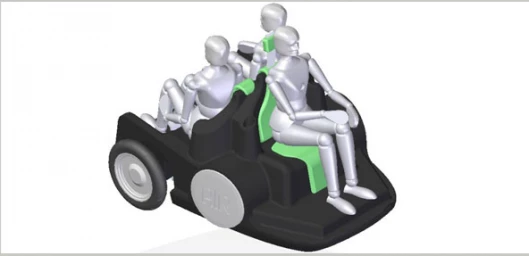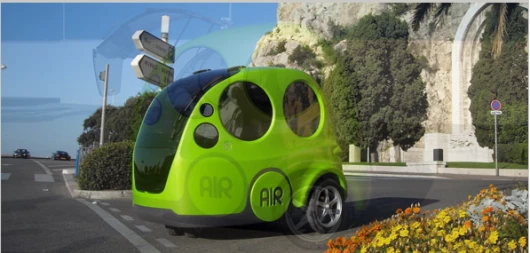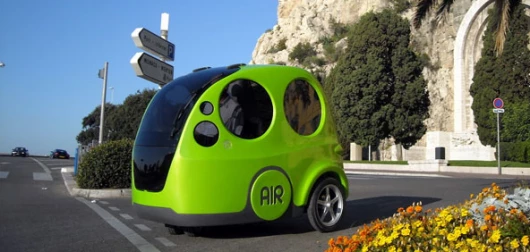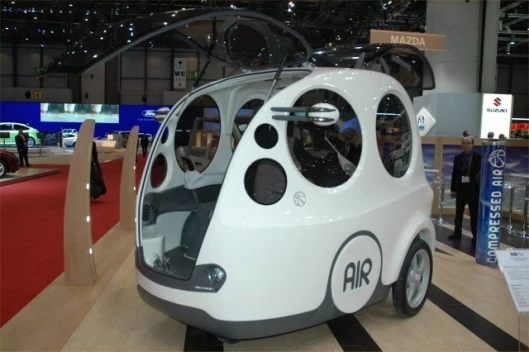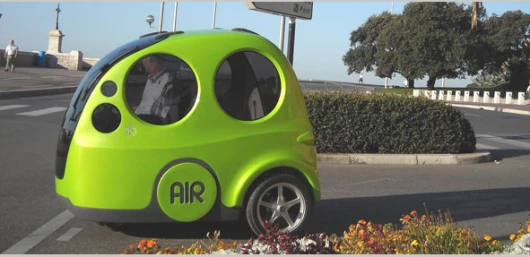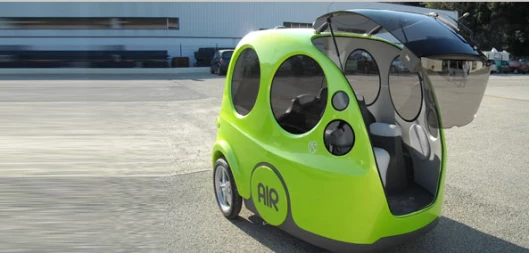March 6, 2009 Compressed air cars are well and truly on their way to mass production in India and America, among other places - although they seem to be taking their time. But the cheap, environmentally-neutral compressed air engine also lends itself to other interesting urban and industrial transport concepts like the AIRPod. Intended both as a personal 3-4 seater city commuter and as a getabout for airport, train station and municipal workers, the AIRPod is cute and easy to drive with a joystick instead of a steering wheel and pedals. The three-wheel transport weighs around the same as a touring motorcycle at 220kg, so it only needs 5 1/2 horsepower from its lightweight air engine to reach top speeds a little over 40mph. Best of all, cheap compressed air refilling will take as little as 90 seconds and cost about EU1.10 for the AIRPod's expected 220km range.
Now that petrol has come down to a more affordable price around the world, there seems to be less urgency surrounding alternative fuel vehicles. But the money that went into fossil fuel alternatives in the last several years is bearing fruit on a number of fronts, with battery-electric vehicles appearing the most likely alternative to make the jump into the mainstream. Car companies are still pushing Hydrogen as a solution, but we'd tend to view that as a red herring - a solution far more amenable to petrol distribution companies than to customers or the energy economy at large.
Compressed air has been developing much more quietly - we haven't seen anything from the major auto companies, unlike hybrids, hydrogen and battery cars which dominate the concept car stands at most auto shows now. But air cars certainly have their practicalities as a petrol alternative, and there are several in development.
While electric car makers are battling for glamorous power figures and shooting for the top end of the market, compressed air car companies like ex-Formula One engine designer Guy Negre's MDI are aiming to prove themselves as contenders in economy and utility. Requiring no exotic battery materials, and using primarily aluminum construction (even in the engine block) keeps air cars light and cheap - to the point where Indian manufacturer Tata, in partnership with MDI, believes it will be able to offer air cars at a price competitive enough to make them a realistic option for the average Indian worker.
But while the company works towards a forecast 2010 launch for its sub-$20,000 American air car product, it's also looking at how the compressed air engine might be able to offer completely new transport options.
One of the more interesting ideas - and the one that MDI claims will launch first of all - is the AIRPod. A three-wheeled minicar, the AIRPod allegedly seats 3 adults and a child - although it looks much more comfortable as a 2-person vehicle, with back-seat passengers facing the rear to conserve space.
The large glass door opens from the front of the pod - the driver controls the vehicle using a joystick instead of a full steering column, so vision ahead is pretty much unhindered. Despite the pod's fairly large interior volume, the chassis is all made from sandwiched fiberglass and polyurethane, so it's super light. Weight is kept down to a miniscule 220kg, which helps squeeze performance and range from the tiny 180cc aluminum compressed air engine.
The compressed air tanks on board can store a maximum of 175 liters of air at a pressure of 350bar - or around 5080 psi. That's about 180 times as much pressure as you'd put in your car tyres, so you'd be right to be worried about a hell of a pop if they get punctured. While it might be a scary experience, though, it's unlikely to be dangerous, as the carbon-fiber/thermoplastic tanks are designed to split and release the air instead of shattering and exploding like a metal cylinder might. Still, there's not much safety and crash test data floating about just yet.
The tiny motor can make about 5 1/2 horsepower, which, combined with the low weight and aerodynamic shape of the AIRPod, allow it a top speed around 70kmh. Range under ideal circumstances would be around 220km - although in the stop-start city traffic and to-and-fro baggage carrying environment the pod is designed for, you'd expect that range to drop significantly.
Refilling the air tanks can allegedly be achieved in 1.5 minutes for a cost of EU1.10 - but filling up this fast might have some heat consequences and we'd expect a production version to take a reasonable amount longer.
The front wheel is actually a two-wheel dolly not unlike that at the front of a jumbo jet, and the AIRPod's steering is controlled by driving the rear wheels at different speeds.
It's an interesting idea - but we've got to admit the main reason we'd like to see the AIRPod come to market soon is that we want to see how compressed air will stack up against battery-electric vehicles in the longer run. Since electric vehicles are well proven through decades of use in things like golf and baggage carts, perhaps a mini-pod like this one is a good way to evaluate compressed air's potential in the market.
Loz Blain

